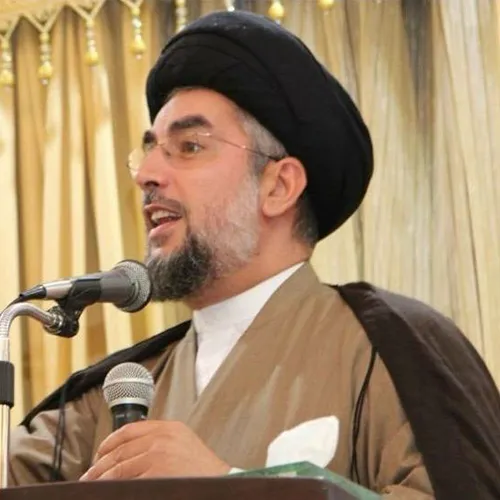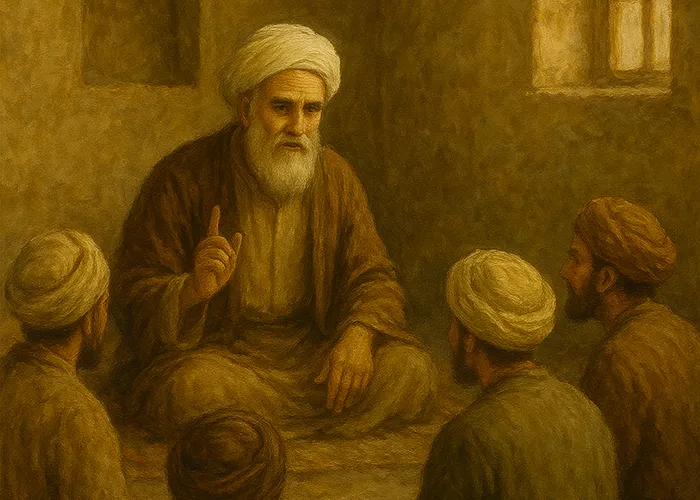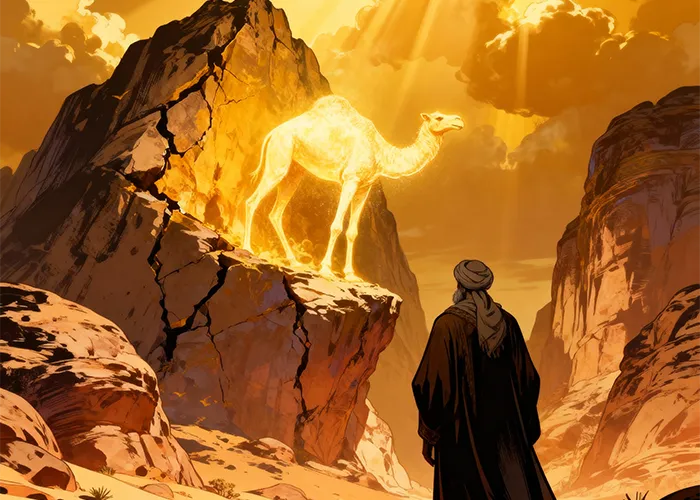Hujjat al-Islam wal-Muslimeen Seyed Qassem Jalali
This year’s Eid al-Ghadir Friday Bulletin has aimed to extend the focus beyond just one week or one occasion. Last week, we introduced Ghadir and addressed some common questions and misconceptions. This week, coinciding exactly with the blessed day, we engaged in a special interview with an esteemed scholar and experienced figure in Friday prayers and religious preaching.
Hujjat al-Islam wal-Muslimeen Seyed Qassem Jalali, who was a guest at the Holy Kaaba during this year’s Hajj, graciously accepted our interview request despite the busyness of his travels and responded promptly to our questions. We thank him sincerely and invite you to read this insightful dialogue.
- Can you tell us about your experience leading Friday prayers—whether permanent or temporary—around the world?
Yes, I have had the opportunity to lead Friday prayers, both regularly and occasionally, in several countries. Notably in the UK, I’ve led prayers at various Islamic centres in London, Manchester, and cities such as Swansea and Cardiff. I’ve also served in Los Angeles (USA), as well as in Germany, Denmark, and Sweden. I have collaborated with communities on organizing Friday prayer programs, preparing both sermons, and presenting Islamic concepts in a way that aligns with the local cultural context.
- In your view, what are the key characteristics an Imam should possess when leading Friday prayers in contemporary Europe?
Some of the most important traits for a Friday prayer leader—especially in Europe—include political awareness, the ability to engage in dialogue and open-mindedness towards various schools of thought and ideologies, fluency in the host country’s language to grasp societal realities and connect with youth, familiarity with Western culture to rationally convey Islamic values, balance and moderation in speech, and a focus on practical, socially oriented solutions to community issues. These qualities are not only essential today but neglecting them can lead to serious consequences and setbacks.
- Among the three major Islamic Eids—Eid al-Fitr, Eid al-Adha, and Eid al-Ghadir—why does Ghadir hold a higher spiritual and theological status?
Eid al-Ghadir stands out due to its unique and foundational role: it embodies the principle of wilayah (divinely appointed leadership) and represents the continuation of prophethood through Imamate. While Eid al-Fitr and Eid al-Adha are celebrations of individual acts of worship—fasting and pilgrimage—Eid al-Ghadir marks the formal and public declaration by the Prophet Muhammad (PBUH) appointing Imam Ali (AS) as his successor. As the Qur’an states:
“This day I have perfected your religion for you, completed My favour upon you, and have chosen for you Islam as your religion.” (Qur’an 5:3)
This verse illustrates that Ghadir was the peak of Prophetic mission and the guarantee of its continuation through legitimate leadership.
- Why has Eid al-Ghadir become marginalized or less prominent in some Muslim communities?
Several historical and sociopolitical factors contributed to the marginalization of Eid al-Ghadir:
4-1- Political changes following the Prophet’s demise led to neglect of narrations relating to Imam Ali (AS).
4-2- The official discourse of Umayyad and Abbasid regimes rejected both the concept of Imamate and the allegiance given at Ghadir.
4-3- State-controlled media and historical narratives weakened Ghadir in favour of superficial notions of unity.
4- 4- Limited awareness among some Muslims, as many key sources about Ghadir were removed or ignored in mainstream hadith and historical texts.
5- What should be done today to revive the message of Ghadir Khumm?
Reviving Ghadir requires both intellectual and practical efforts:
5-1- Spreading Ghadir’s message through reliable Islamic sources. Just as the Prophet (PBUH) asked the pilgrims at Ghadir to convey the message to those absent and to future generations, it is an obligation for all to actively promote and teach about Ghadir.
5-2- Reviving public celebrations and cultural events around Ghadir in Islamic centres. Narrations emphasize the importance of commemorating this day through gatherings, charity, and festive acts.
5-3- Raising awareness among the youth and educating them with love for Ahlul Bayt and a clear understanding of the concept of wilayah.
5-4- Promoting unity-oriented discourse by presenting Ghadir as an event that brings hearts together rather than dividing them.
5-5- Utilizing modern media—social networks, podcasts, films—to explain and globalize the message of Ghadir in compelling and accessible ways. Today’s digital platforms offer low-cost and highly effective means to convey the truth of Ghadir worldwide. Just as adversaries of Islam use both traditional and digital media to promote distortion and division, Muslims must also counter Islamophobia and misinformation with strong, well-strategized media presence.
editor's pick
news via inbox
Subscribe to the newsletter.




